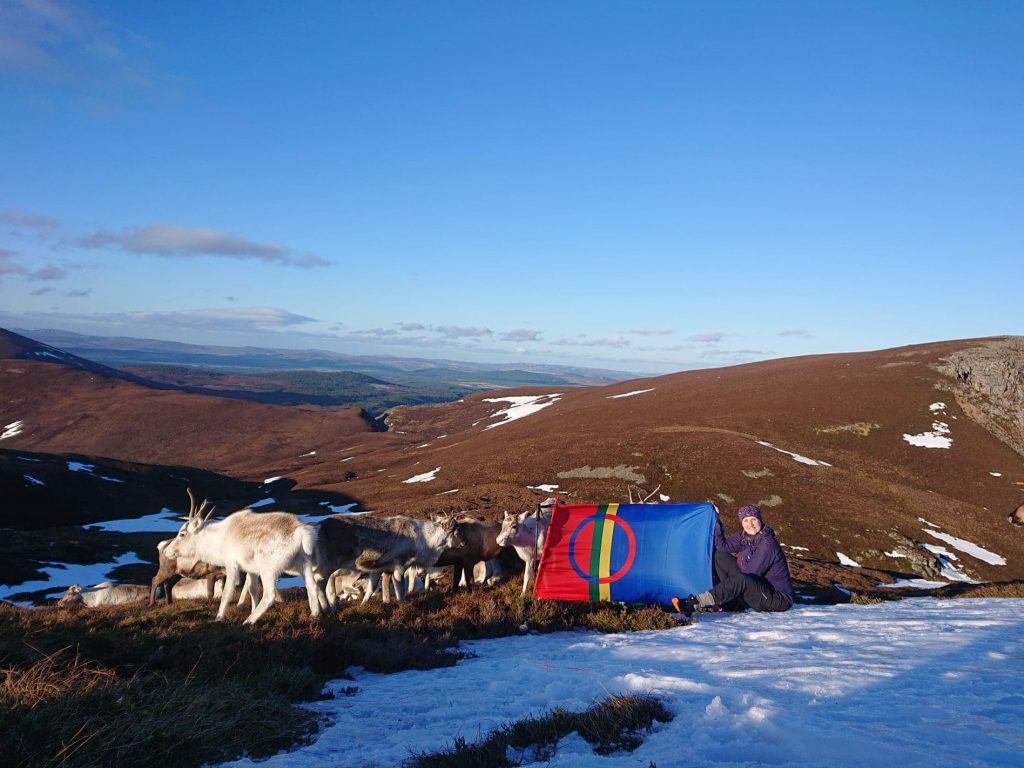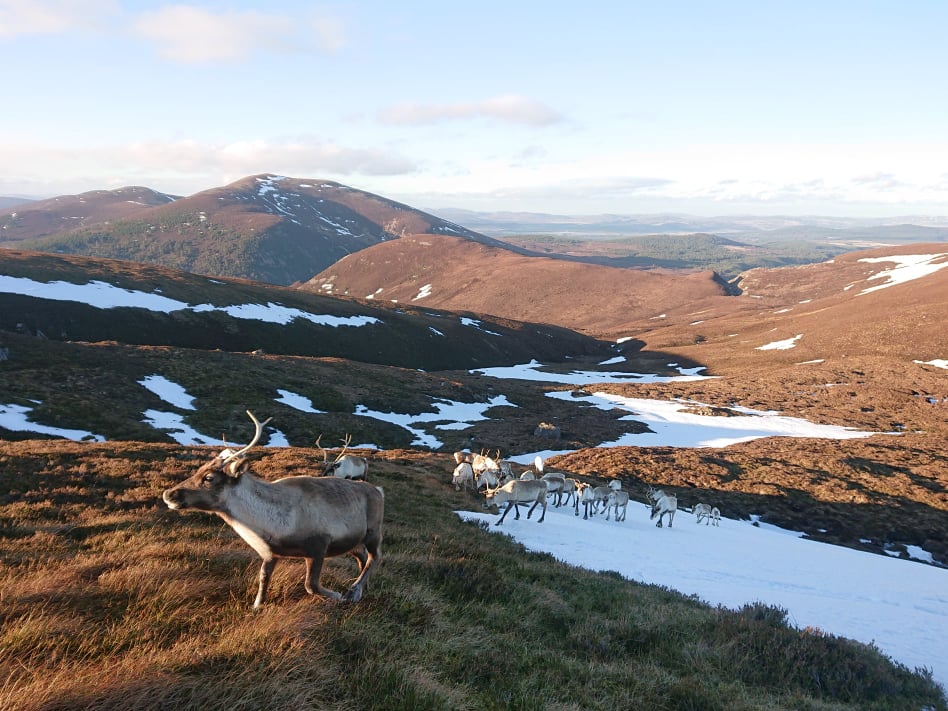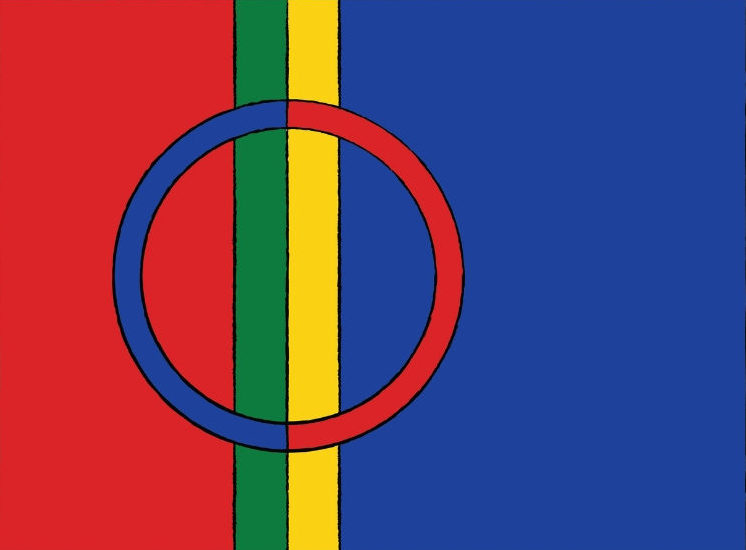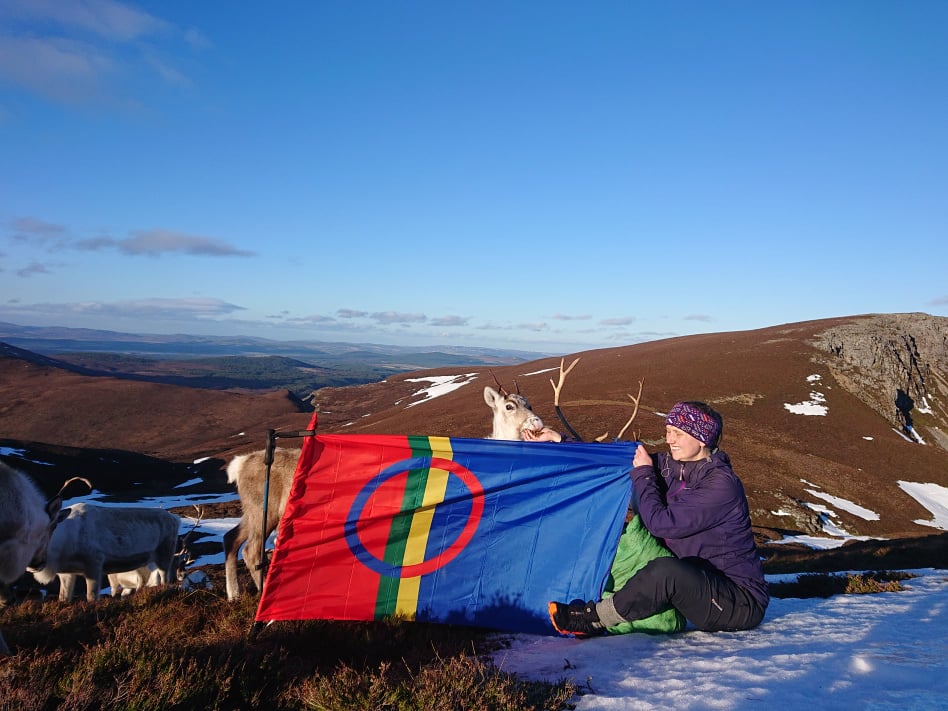Recently one of our supporters posted us two Sámi flags. He wrote explaining that he had been hoping to come and visit the reindeer in February, and on Sámi day, take the flags up to the herd, and make a toast to the Sámi people, culture, and way of life. He had originally been planning a trip to visit the Sámi people but when it was apparent this wouldn’t be possible, he had planned to visit us instead. So, you can imagine how disappointed he was to find out that his trip to the Cairngorms also wasn’t possible. He asked if we could take the flags on the hill and raise a toast in his place, of course we were delighted to do this.

For the week around Sámi national day, when Dennis had been hoping to visit the reindeer, the weather was so wild that we couldn’t even get to where the reindeer were, let alone fly a flag. We’re talking snow drifts across the road as tall as me! This was serious winter weather. The reindeer were of course totally fine. When the weather gets wild and the snow gets deep the reindeer head up onto the ridges where the wind has blown the snow off and it’s easier to dig through to the grazing underneath. There was a couple of days when we forgot to take the flag out to the herd. The day we were finally able to was pretty wonderful. Me and Fiona headed out to find the herd, we had spied them quite a way away and were hoping to call them a bit closer. In the end we met somewhere in the middle. It was beautiful sunshine and certainly felt like spring was on it’s way. We flied the flag with the reindeer around it, it got me thinking a bit about what the Sámi flag represents.

The Sámi flag is a relatively new flag, it was first designed in the 60s. The colours in the flag, red, green, yellow and blue, are the most common colours used in Sámi clothing. The circle symbolises the sun in red and the moon in blue. The yellow and green in the middle are to symbolise the animals and nature.

The sun is incredibly important in Sámi culture and the sun symbol appears in lots of traditional Sámi artwork. The sun is worshipped in Sámi culture in particular due to the lack of sun in winter and the life that it brings in the summer. In the Sámpi, the area where the Sámi live, in the winter the sun doesn’t reach the horizon. Beaivi is the name of the Sámi sun deity. On the winter solstice a ceremony is carried out for Beaivi and a white reindeer is sacrificed to ensure that the sun returns, and the long winter ends. In spring when the sun arrives, the plants start to flourish and so do the reindeer which brings prosperity to the Sámi people. In order to give the sun more strength to rise in the sky, Sámi people leave butter on their doorsteps which melts and provides energy to the sun.

The moon is also important in Sámi culture, unlike the sun however, in Sámi folklore people are very suspicious of the spirit of the Moon. Supposedly in December the evil spirits wander among the people and the moon is thought to be the leader of them. Traditionally in February there would be a festival under the full moon in which people would bang drums and make a lot of noise to scare the moon away so that the sun can return. The sun and the moon are often shown to be battling in folklore. I would imagine that people are suspicious of the moon as it always comes out at night when it is dark.
The Sámi flag is a beautiful array of colours and wonderfully represents how the Sámi way of life revolves around the seasons and nature, much like the lives of the reindeer themselves.
Lotti
